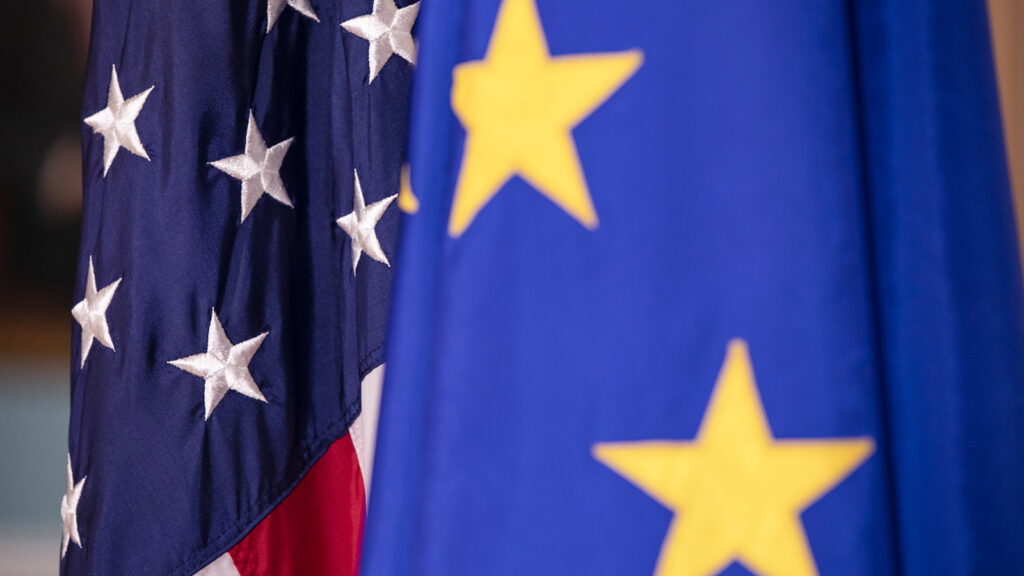Reimagining Business: How to Cater to the Customer of the Future

In a world of blended reality, value shifts to the business that moves the fastest, knows the customer the best, transfers control and power to the customer, and adapts based on individual customer understanding. The winners will be the companies that innovate with these shifts in mind.
Photo: Gonzalo Arroyo Moreno/Getty Images
Meet Dawn. She’s never been to the doctor’s office, but she visits her doctor every week. She’s constantly shopping, but she’s never waited in line. Her apartment recognizes her face. She doesn’t go into the office, she logs onto a platform. She doesn’t have a resume, she has ratings. She doesn’t have a boss, she has a robo-advisor that highlights upskilling opportunities.
Dawn is an average 25-year-old in the not-so-distant future. She craves mobility, flexibility, and uniqueness; she demands speed, transparency, and control; and she has enough choice to avoid any company that doesn’t give her what she wants. We’re in the midst of remarkable change not seen since the industrial revolution, and a noticeable gap is growing between what Dawn wants and what traditional companies can provide.
Dawn strives for freedom, and technology allows her to untie many binds. She lives a life in flow, where multiple gigs have replaced a single career path and her house has been replaced by a co-living space. She lives a transparent existence where everything from her smart watch to her smart refrigerator collects data from her and applies it on behalf of customization and personalization. She expects everything on-demand, and in a world of predictive intelligence, “right now” might already be too late.
As a result, she’s shifted who and what she trusts away from individual experts toward crowdsourced wisdom, intelligent devices, and personalized platforms. Since she’s constantly getting support from the virtual world, immersive blended experiences become a new way of living.
This is not a dramatic description of the future. All of these shifts are grounded in business models and technologies that exist today, and all herald profound changes for companies and their leaders.
How to Win the Customer of the Future
To keep up with a life in flow, companies need to de-locate their experiences and fundamentally re-examine any interaction that interrupts a customer’s day. To thrive in a transparent existence of customer omnipotence, companies need to be able to instantly apply customer knowledge on behalf of smart, personalized products and experiences. To excel in a world of on-demand everything and exponential intelligence, companies need to be fast and smart—keeping up with customers’ lives, but in a way that reflects their preferences and values. And they need to do all this in a way that recognizes that in a world of blended reality, it won’t be about our multi-channel web versus app versus in-person versus phone world. There will be one channel: the customer channel.
In short, value shifts to the business that moves the fastest, knows the customer the best, transfers control and power to the customer, and adapts based on individual customer understanding. The winners will be the companies that innovate with these shifts in mind.
Instead of “digitizing” a business, automating the supply chain, boosting CRM, improving app functionality, or adding more social to the marketing mix, these companies come up with “digital business designs” that fully embrace different assumptions, even about how money is made.
To excel in a world of on-demand everything and exponential intelligence, companies need to be fast and smart—keeping up with customers’ lives, but in a way that reflects their preferences and values.
In our experience, the companies that are best at nimbly revamping their business models to cater to the rapidly evolving preferences of future customers hold the following truths to be self-evident:
That the value you create doesn’t need to be created by you. Because everyone is viewed as a producer in a connected system, exponentially more value is created. Platform models, which coordinate networks of participants, scale faster and deliver greater value. Digital models have built-in incentives to collaborate into their models and are exceptionally easy to snap into.
That transparency is a great thing, not a threat. Data and more transparency are inevitable. The digital mindset is to grow value by adding data, not to hide value by bundling or trying to be too controlling about information that can help customers make better decisions.
That share of customer attention is the only lasting source of advantage. Assume that winning attention means winning the flow of data, which creates the means to win even more attention. Scale economies come from the database size, not the factory size.
That the value is in services, and everything will be a service. Service and subscription models are inherently smarter because they build in learning loops and feedback, capture better data, and keep iterating to improve quickly. People are Walmart “shoppers” but Amazon Prime “members”—the result is a highly different relationship and ability to grow. Uber learns you, the yellow cab forgets you.
In order for companies to get ahead of their customers’ future preferences, they need to reorient their business designs to take advantage of the orchestration as a whole, no longer the efficiency of any one player. Companies must pivot from producers to enablers. Their profit models should move from being producer-centric to becoming customer-centric. Then they can achieve unexpectedly new levels of creativity—like how the closed-loop business design of the Amazon Dash button trades loyalty and ongoing profit streams for the radical convenience of pressing a button for replenishment.
Living by these rules, which buck conventional wisdom, takes courage. Embrace complete transparency, even if my product scores poorly? The less you make, the better you do? Price for outcomes, not for products? To keep up and get ahead, embracing these assumptions has to become the new normal.
This new world poses great risks for traditional companies, but also presents brand new opportunities for solving important problems. Waze solved the traffic problem through crowdsourcing real-time data from drivers. Tala is solving lending to the unbanked in Africa with location data and algorithms on cell phones that verify creditworthiness. It’s time for your company to turn risk into opportunity and delight Dawn—and the rest of your customers of the future.





